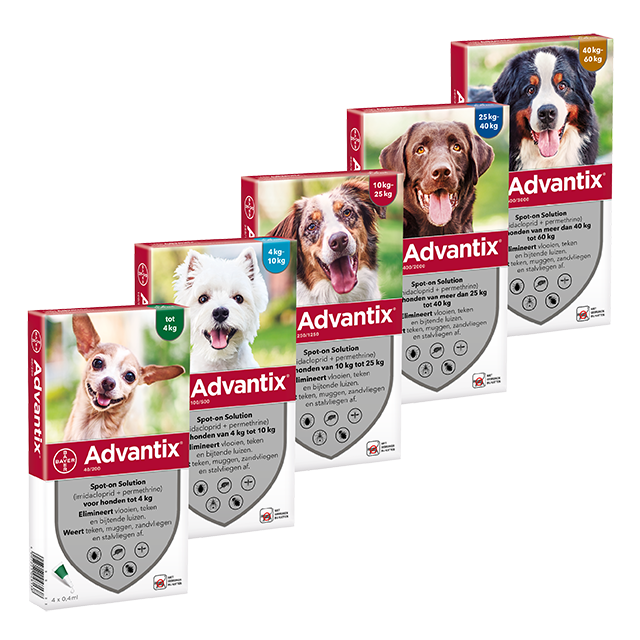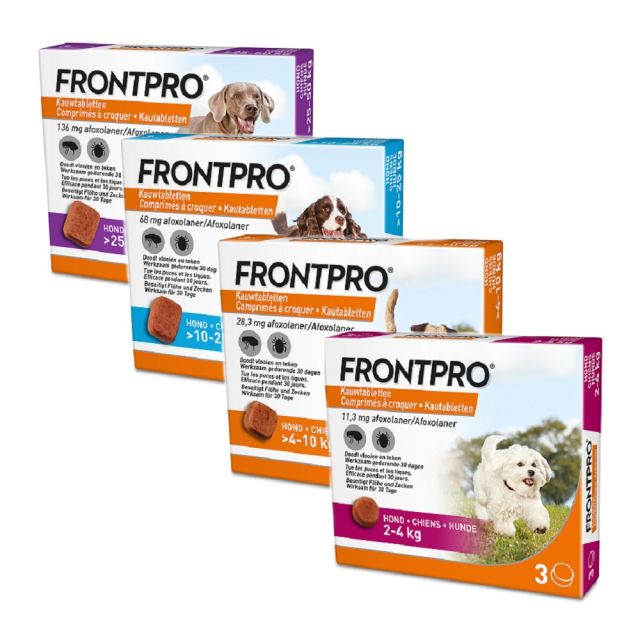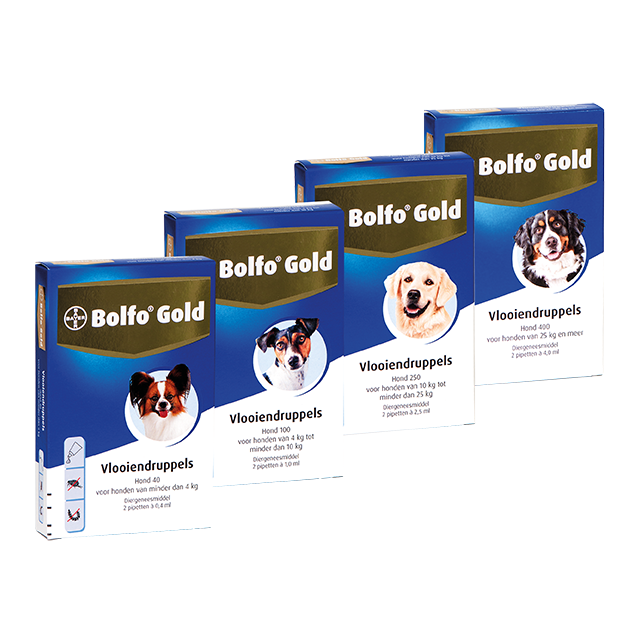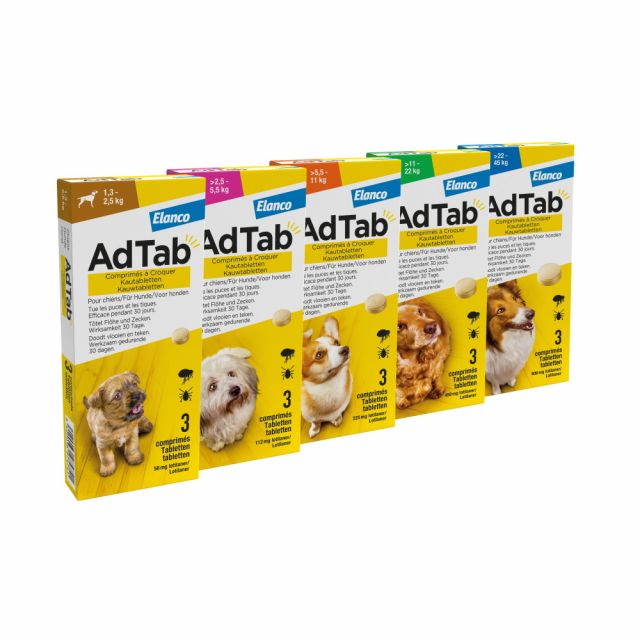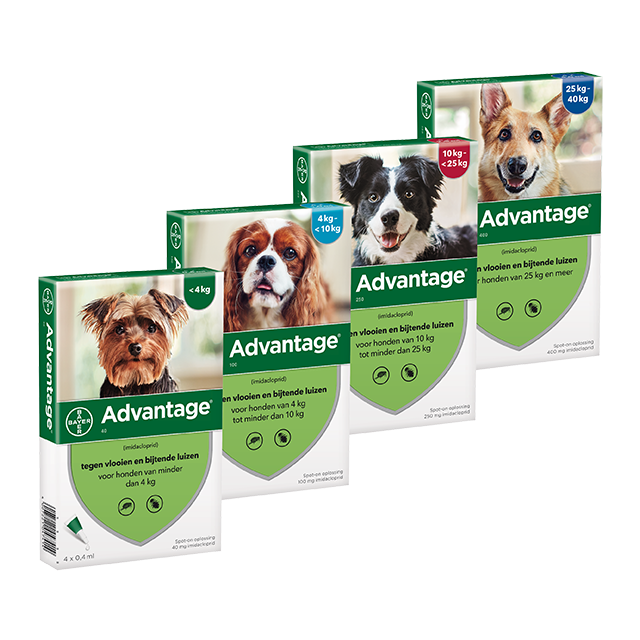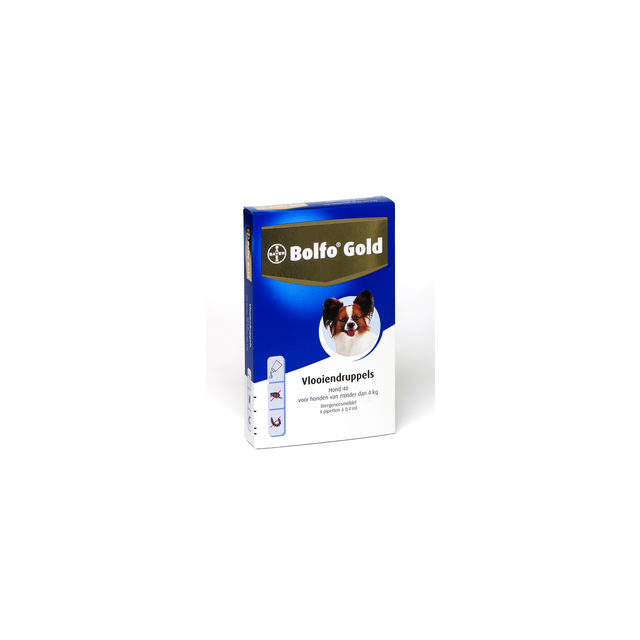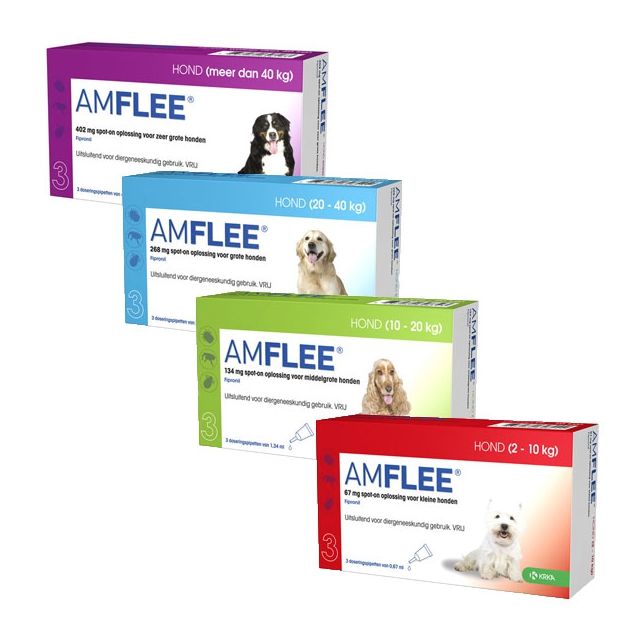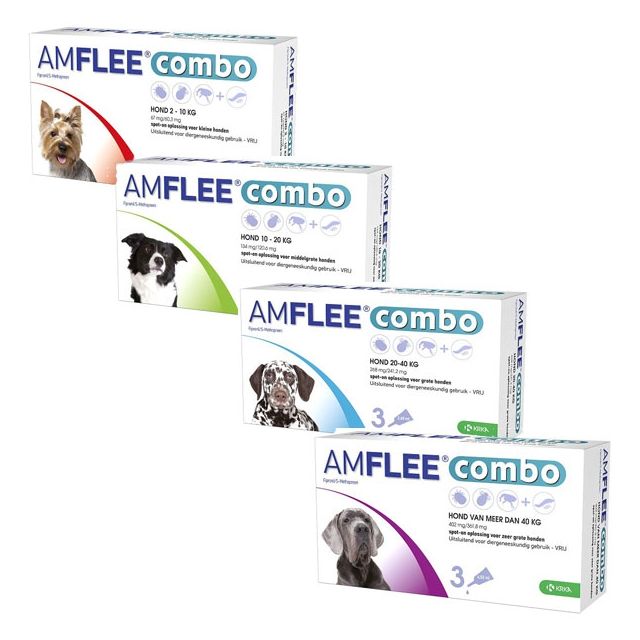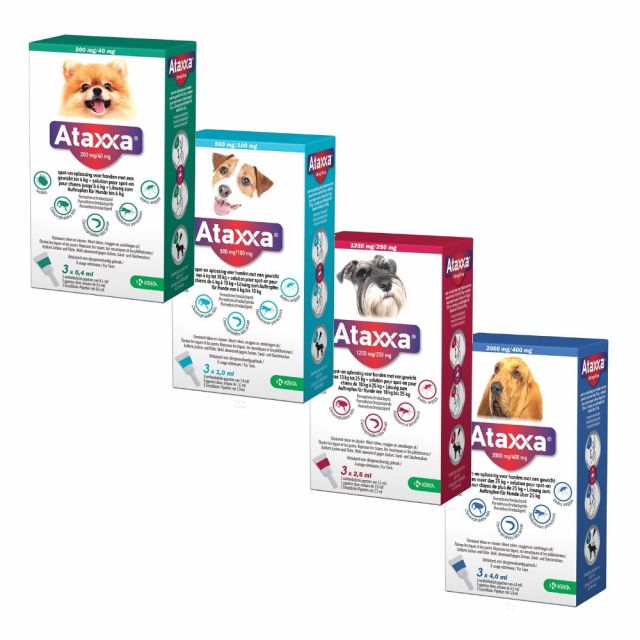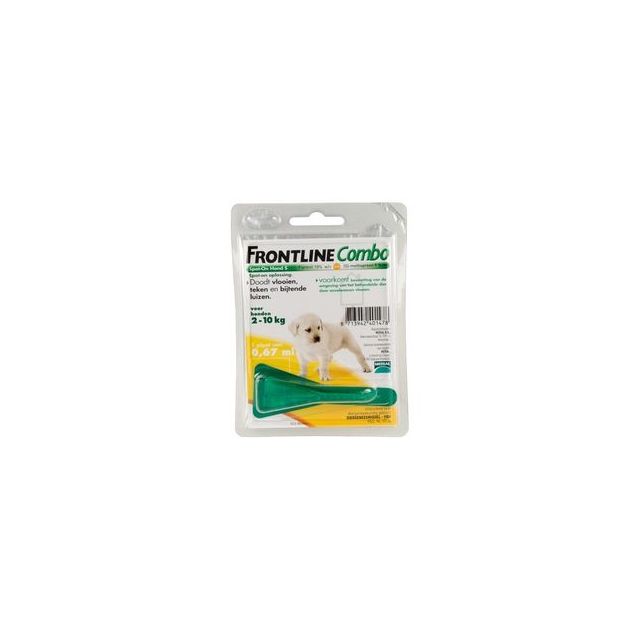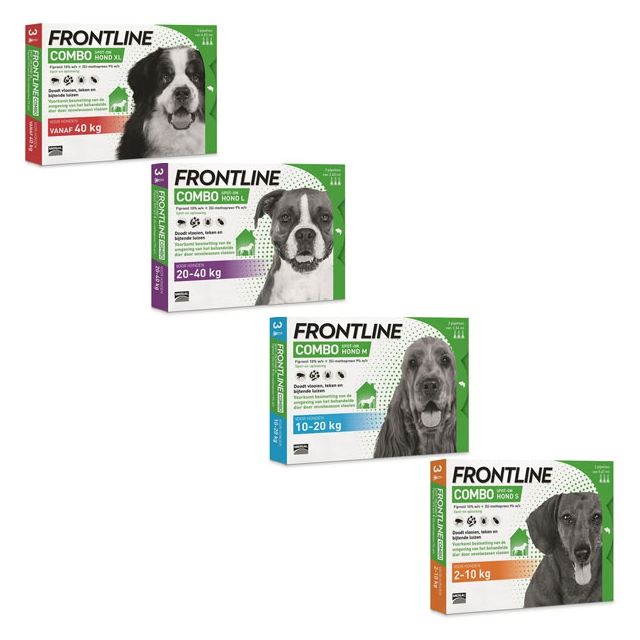Fleas in puppies
Besides being busy with raising your puppy, choosing the best toys and the best food and various other supplies, it is also important to consider those pesky little critters; fleas. Fleas are everywhere, both indoors and outdoors, and are active all year round. It is therefore almost inevitable that your puppy will come into contact with them sooner or later. Many puppies also come with fleas from the nest. When your puppy itches, this can indicate a flea infestation. Also, sudden jumping, looking around or running away 'as if stung by a wasp' can be the result of a flea bite. In addition to causing nuisance, a severe flea infestation can even cause anemia. Fleas can also be the source of a tapeworm infection. Pharmacy4pets helps you prevent or combat fleas on your puppy.
The flea cycle
Your puppy can get two types of fleas: the dog flea and the cat flea. And although that may sound strange, the cat flea is the most common type of flea on the dog.
Fleas lay eggs in your puppy's coat after they have fed on its blood. The eggs fall out of the coat and end up on your puppy's resting places. After one to several days, the eggs hatch. The larvae then hide in dark places in the house, such as cracks, crevices, and carpeting. They eat house dust, skin flakes, and droppings of adult fleas. After a while, the larvae 'pupate.' As pupae, they can survive for months. Certain stimuli (such as warmth or vibrations) cause the cocoons to release adult fleas, which then seek out your puppy for their blood meal and to lay eggs.
Checking your puppy for fleas
With a flea comb, you can check if your puppy has fleas. By carefully combing the coat, especially in areas where fleas like to sit (the base of the tail, armpits, and groin), you can find adult fleas or flea dirt. Fleas are recognizable by their flattened appearance from the side. They also don't walk or fly but jump. Flea dirt looks like dark brown to black granules, often mistaken for sand. The difference is easy to distinguish by knocking the granules onto a white sheet of paper and then moistening and smearing with a drop of water. Because flea dirt consists of dried blood, it turns reddish-brown when moistened. Sand remains unchanged in structure and color. Flea eggs are not visible to the naked eye.
Treating fleas on your puppy
Fleas are easy to treat but can be persistent. A thorough approach is therefore important! The choice of product depends on the age and weight of your puppy and your personal preference. Many products can only be administered from a certain age and/or weight. For young puppies or puppies of small breeds, extra caution is needed! Pharmacy4pets offers various treatment methods so that you can choose the one that best suits your puppy.
Flea drops
The use of flea drops in pipette or spot-on form is a quick and effective way to kill fleas. Advantage spot-ons kill fleas and lice on your puppy. Vectra 3D also protects your puppy against ticks, mosquitoes, and sand flies. For very young puppies, Stronghold is a good choice. It can be administered from six weeks of age and also works against lice, roundworms, and (ear) mites. Stronghold is only available with a prescription from your vet. The mentioned products are safe, quickly kill fleas, and work for about 4 weeks.
Flea collar
A treatment method that works for a longer time is the flea collar. The Seresto tick and flea collar protects your puppy for up to 8 months against ticks and fleas. The collar also has a repellent effect against sand flies. When using the collar, contact with the skin of the active substances in the collar is very important. The collar must be worn tightly enough to be effective. Since puppies grow quickly, it is important to adjust the collar in time; it should not be too tight!
Flea tablets
Tablets, such as Frontpro and Adtab, kill fleas and ticks quickly, safely, and effectively. Frontpro can also be used to treat puppy mange (demodex). The tablets must be administered every 4 to 5 weeks and can be given to puppies from 8 weeks old.
Flea spray
You can also protect your puppy with a flea spray. The spray from Frontline can even be used on very young puppies. The spray should be sprayed over the entire coat or distributed with a glove. A proper dosage (spraying often enough) is, of course, important for good efficacy. Unfortunately, resistance to fipronil, the active ingredient in Frontline, among others, is increasingly being observed.
Tip: If you use a spot-on or spray, do not wash your puppy about two days before and after the treatment. Many products work in the fat layer of the skin. Washing before treatment removes the fat layer! Washing shortly after treatment can make the product ineffective. Check the package insert for exact time periods, as they vary by product.
Treating fleas in the house
If your puppy has fleas, you must treat not only your puppy but also your house. Only 5% of the fleas are on your dog; the rest are in the environment. By treating your puppy and your house simultaneously, the flea infestation will be brought under control faster. If you have other pets, such as a cat, don't forget to treat them too.
If you have both a cat and a dog, it is important to know that cats cannot tolerate permethrin, a flea product that can be used well on dogs. Permethrin is, for example, in Advantix. Permethrin poisoning in cats causes nervous symptoms. Therefore, flea products for dogs should not be used on cats. It is even safer to choose a product with an active ingredient other than permethrin for your puppy if you also have a cat, especially if they have a lot of contact.
If you have a question about fleas on your puppy or about products from Pharmacy4Pets, please contact us.

